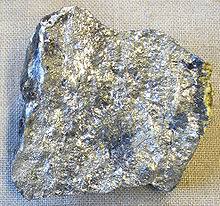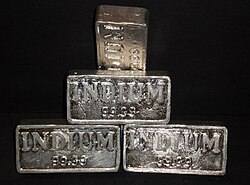Anyone 4 Science joins forces with Swiss International Boarding School
L'Ecole Chantemerle, Blonay, Switzerland is an international boarding school in an idyllic location, nestled in the alps, overlooking lake Geneva. Established in the 1960s, Chantemerle offers education through French during the acedemic year. During the summer they offer language camps in both French and English.
Chantemerle believe in teaching languages using a CLIL approach. CLIL (Content and Language integrated learning) is a two for the price of one approach where the students learn another subject through the new language.
Anyone 4 Science provides fun, hands-on science, engineering and maths activities that focus on inquiry learning and design. For 2013 Anyone 4 Science and Chantemerle have joined forces so students can learn science and a language - French or English, simultaneously.
So if you would like to put your summer to good use learning French and Science or if you would just like the experience of learning science through English in another country this camp has your name on it. The students are going to learn about microbiology, chemical synthesis, electricity, use their new knowledge to solve everyday problems and challenges.
To book Contact Yann or Anne at Chantemerle or Christine at Anyone 4 Science
www.chantemerle.ch
www.anyone4science.com
Congratulations to the winners of our Chemical Elements Competition
Scoil Mhuire, Ballyboden
Scoil Mhuire Sandymount
St Damian's NS Walkinstown
St Peter's NS, Phibsboro
St Canice's GNS, Finglas
St Marnock's NS, Portmarnock
Below are the winning posters:
2012 and Dublin is the City of Science
This means lots of scientists will gather in Dublin during July to discuss their research and other current topics of interest.
To encourage all the citizens of Dublin to participate in this great event Anyone 4 Science is sponsoring a science competition for primary schools.
This competition is open to the 5th classes of all primary schools in the Dublin City postal area - ie those schools who have a post code in their address - Dublin 6, Dublin 8, etc.
What they have to do is to find out which element has the same atomic number as their postcode and then find out all they can about that element. What type of material is it? Is it essential for life? does it join with other elements to make compounds? What is it used for? Are there factories or other businesses in their area that use it? maybe use it in an experiment.
The class then has to put its findings together on an A3 poster and submit it with an entry form to Anyone 4 Science, Ballyduff, Ashford, Co. Wicklow. Closing date for receipt of applications is 5pm on March 30th 2012.
Tellurium
 This blog, being written for the International Year of Chemistry, taking one element each week has finally arrived at week 52 and element 52 Tellurium.
This blog, being written for the International Year of Chemistry, taking one element each week has finally arrived at week 52 and element 52 Tellurium.
Although I spent 4 years studying Chemistry and many more working in the field, when I started this blog last year I realised that I had never heard of the 52nd element - Tellurium . How could that have happened I wondered.
During the year I realised that there were other elements with which I was not familiar. I learned a little more about some of them during the year.
I also came across other chemists who had had the same experience, one had even traveled the world to try to find out about the many rare and not generally studied elements.
So what of Tellurium? It appears in the same group as oxygen, sulphur and selenium and is a non metal, but Tellurium has some metal characteristics and is classified as a semi metal.
Tellurium is occasionally found as a free element but is usually found combined with Gold.
Tellurium and all its compounds are highly toxic.
In spite of its rarity and toxicity, it does have some uses in semiconductors and as alloys with other metals.
Antimony
The 51st element is called Antimony. Its name comes from the Greek words anti and monos which mean "not alone" and its symbol Sb from its Latin name Stibium.
Metallic Antimony is an extremely brittle metal of a flaky, crystalline texture. It is bluish white and has a metallic lustre.
Antimony is sometimes found as a free element but more often as its sulphur compound Antimony Sulphide.
Antimony and many of its compounds are toxic so this limits its uses though it has in the past been used as coins. It isn't very suitable for use in coins as it wears away relatively easily.
Antimony is used in the electronics industry, in alloys with other metals and in batteries.
Tin
The 50th element is one that is very familiar to most people - Tin. Long before children learn the word science they learn about Tin - the container for storing biscuits and foods such as baked beans, fruit and pet food.
The scientific symbol for Tin is Sn. This name comes from Stannum the latin word for Tin .
Known for thousands of years, Tin was mixed with copper to make bronze.Tin is a silvery white metal.
The cans which we call tin cans are not made of pure Tin but are actually steel cans with a thin layer of Tin covering them.Tin is also used in solders.
Window glass is made by floating molten glass on molten Tin . This is known as the Pilkington Process.
Experiment of the week
To make a flat sheet of fat using molten ice.
You will need:
About 15 ice cubes
A plastic or metal tray
A saucepan or heat proof container
250g lard
Adult supervision
What to do:
Place the ice cubes in the tray and allow to melt. The melted ice should be a minimum of 1cm deep. Add more ice if necessary.
In the saucepan melt the lard.
Gently pour a thin layer of the molten lard onto the molten ice (water).
Allow to cool. Remove the sheet from the tray.
Make more sheets of lard as required.
Indium
The 49th element is indium, another metal with a silvery white appearance. Like Cadmium, indium is a soft metal. It has a low melting point - 156°C and can be mixed with gallium to make an alloy which is liquid at room temperature
It is used for making some electronic components, as a replacement for silver in mirrors and as a solder.
The name indium comes from the word indigo. Indigo is a dark blue colourful often cited as being one of the rainbow colours.
Experiment of the week
Investigate the colour indigo
You will need:
a light source, the sun or a light bulb
A CD
Adult supervision
What to do:
shine the light on the back of the CD
You should see all the colours of the rainbow as the light is split into its constituent colours.











